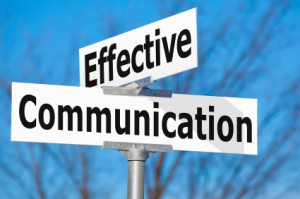Content
How much can you say in a 30 minute presentation? How much should you say? What should you say? In what order? The issues that surround content include quantity, quality, and structure. The posts in this category explore these issues.
How much can you say in a 30 minute presentation? How much should you say? What should you say? In what order? The issues that surround content include quantity, quality, and structure. The posts in this category explore these issues.
If you’re following this year’s presidential campaign, you’re probably experiencing a fundamental law of information science: the more
frequently a signal is repeated, the less information it carries. The law has many practical implications. It’s why you can buy a vowel on Wheel of Fortune. Vowels are frequently repeated so they carry very little information. So you can buy one cheap.
The law is also why people start to ignore you if you keep repeating yourself. You’re adding no new information to the conversation, so why pay attention? This is a big problem for the presidential campaign. The two parties have been repeating essentially the same thing for two years now. The candidates have had nothing new to say for months. The talking heads repeat the same signals over and over but they’re adding no new information to the party. For many of us, it’s time to tune out.
There’s a difference, however, between signals and messages. Most companies should keep their core message consistent over time. Consistency builds trust and trust builds brands. To keep the message resonating with your audience, however, you’ll need to change the signal from time to time. In other words, you’ll need to find new ways to say the same thing. In brand building, this is what creativity is all about. You’re not trying to create a new message (in most cases). You’re trying to find new ways to deliver the same message so the audience will continue to listen.
Just think of how many times you’ve seen the signal, “Safety First”. It’s a good message but a tired signal. It’s become part of the wallpaper. We no longer pay attention to it. If you want us to behave safely, you’ll need to change the signal. How about this: “You Don’t Want to Die, Do You?”
Now it’s time for me to change the signal while keeping the message the same. Stop reading and click on the video.
 It used to be simple. We used a typewriter and photocopier to create and distribute memos. We distributed the memos and left people to their own devices. They could read the memo when and where they wanted to. The memo contained everything they needed to know. They didn’t need a presenter to explain it to them.
It used to be simple. We used a typewriter and photocopier to create and distribute memos. We distributed the memos and left people to their own devices. They could read the memo when and where they wanted to. The memo contained everything they needed to know. They didn’t need a presenter to explain it to them.
On the other hand, we used transparencies to create presentations. Transparencies were hard to make, so we didn’t make many of them. Those that we did make were very simple — just a few words. Transparencies provided speaker support. They highlighted the key points. But they didn’t replace the presenter. Without a presenter, you would have no idea what the transparencies meant. They were too skeletal.
Today, we use Power Point for both memos and presentations and that confuses our communications. We use Power Point for memos because it’s an easy way to create hundreds of charts. In other words, we can give the reader everything they need to know — it’s a memo. But we also use Power Point for speaker support because it’s an easy way to create visuals — its a presentation. If we’re not careful, we can confuse a memo for a presentation. But a memo doesn’t need a presenter — it’s self-contained. It’s not speaker support, it’s speaker replacement. If you’re not careful, your audience will be glazed and confused.
It’s OK to use Power Point for both. Just remember that memos and presentations serve two different purposes and, therefore, require two different forms. Learn more in the video.
If you’re shot down behind enemy lines, would you rather be alone or in a group of colleagues? According to research from the U.S. Air Force, your chances of survival are better if you’re alone. That may seem counter-intuitive but groups — especially temporary groups with fluid leadership — often shift toward riskier behavior. Individuals tend to make fact-based decisions that often result in better outcomes.
fluid leadership — often shift toward riskier behavior. Individuals tend to make fact-based decisions that often result in better outcomes.
In other words, an individual makes more conservative decisions. Operating alone, he or she focuses on and assesses the situation. In a group, members assess each other as well and may make decisions based on group dynamics rather than facts and evidence. This is what Robert Cialdini calls “social cues” — we look to each other for cues on how we should behave rather than making a hardheaded assessment of the situation.
To effectively lead groups, you need to understand how group dynamics and social cues can change your behavior. You may “go with the group” even if you feel uncomfortable with their decision. Watch the video — you might be surprised at what you would do if you find a man lying unconscious on the streets of Manhattan.
 I returned to academia last fall as an adjunct professor at the University of Denver. I teach within University College which provides professional and continuing education within the larger university. Most of my students are in their 30s or even 40s and many of them work within IT organizations. By and large, they know current enterprise technologies better than I do. They’re now returning to school to study for a Master’s degree that will help them move into management. That’s where I come in — I teach courses on how to manage IT processes, functions, and portfolios. I also teach the Capstone seminar where students demonstrate that they can take all that they’ve learned in their Master’s courses and use it to solve a problem in our profession.
I returned to academia last fall as an adjunct professor at the University of Denver. I teach within University College which provides professional and continuing education within the larger university. Most of my students are in their 30s or even 40s and many of them work within IT organizations. By and large, they know current enterprise technologies better than I do. They’re now returning to school to study for a Master’s degree that will help them move into management. That’s where I come in — I teach courses on how to manage IT processes, functions, and portfolios. I also teach the Capstone seminar where students demonstrate that they can take all that they’ve learned in their Master’s courses and use it to solve a problem in our profession.
I love working with my students both online and in the classroom. As is often the case, I probably learn more than they do. What surprised me, however, was the relative lack of writing skills among my students. They can write excellent Java code but they sometimes struggle with expressing their more abstract thoughts in written form. To help remedy this situation, I’ve written a six-page primer on effective business writing. It’s proven popular among my students and I thought you might like to read it as well. You can find the .pdf file here. If you find it useful, please feel free to pass it on.
I’m a visual learner. When I understand something, I might say, “Oh, I see”. If you’re a smart communicator, you’ll pick up on that cue and incorporate visual images into your messaging. You might say things like, “let me draw you a picture” or “our vision of the future is….” These phrases speak to my visual channel, establish a bond with me, and help you communicate more effectively. But what if I’m an auditory learner? Or a kinesthetic learner? You’ll need to change your phrasing to connect effectively with me. And what if you’re speaking to a large audience? Which channel do you emphasize? Find out in the video.